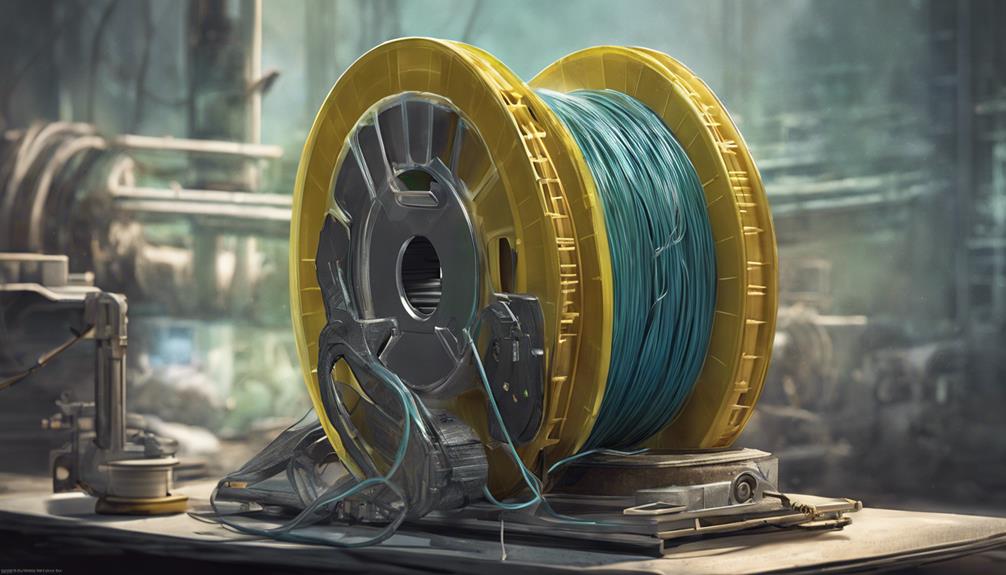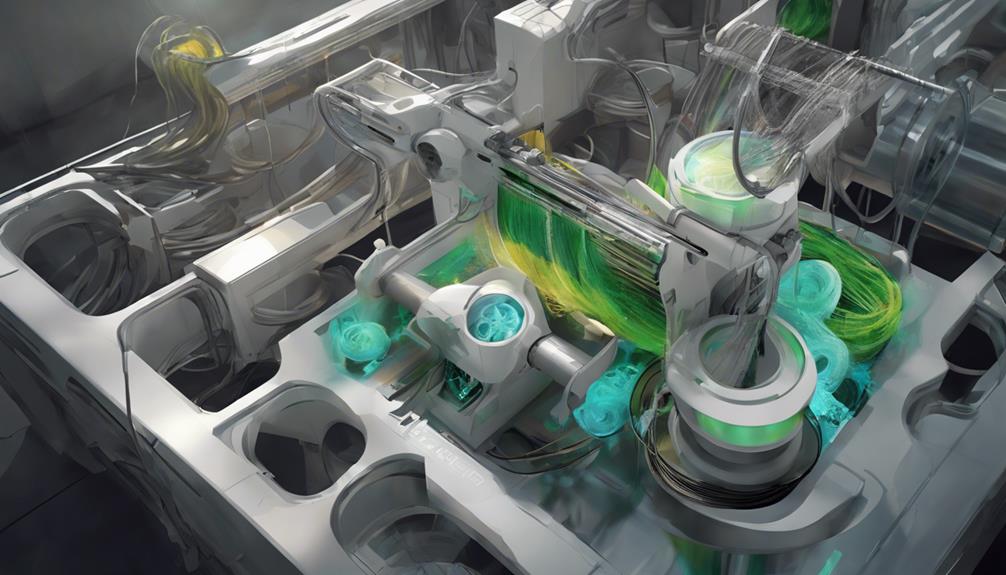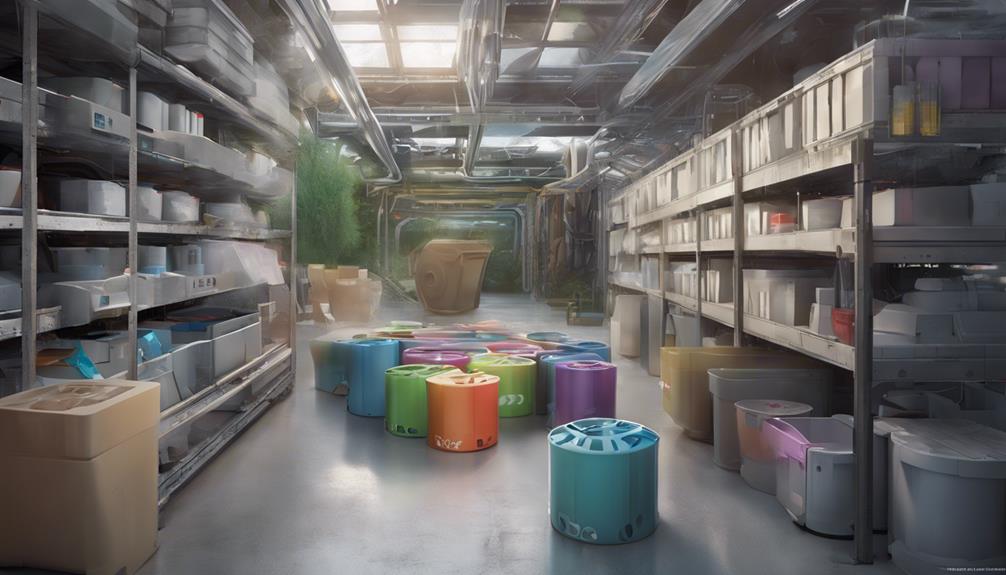Did you know that traditional 3D printing spool recycling methods often result in mixed materials and contamination, making the process inefficient and less eco-friendly? Discover how the integration of cutting-edge technologies and strategic partnerships is paving the way for a revolution in spool recycling. Stay tuned to explore how these advancements are reshaping the landscape of sustainable practices within the 3D printing industry, promising a more environmentally conscious future.
Innovations in Spool Recycling Processes

When revolutionizing 3D printing spool recycling methods, you can explore innovative approaches to enhance the efficiency of spool recycling processes. Consider implementing automated sorting systems to streamline the segregation of different spool materials. By utilizing advanced technology like AI-powered sensors, you can accurately identify and separate plastic, cardboard, or other materials for recycling.
Additionally, developing a standardized spool design across manufacturers can simplify the recycling process. This uniformity would facilitate easier sorting and processing at recycling facilities. Collaborating with 3D printing companies to establish a closed-loop recycling system can also guarantee that recycled spools are reintegrated into the manufacturing process efficiently.
Embracing these advancements can make spool recycling more sustainable and cost-effective in the long run.
Sustainable Practices for Spool Reuse
Implementing sustainable practices for reusing spools enhances environmental conservation efforts in the 3D printing industry. When considering spool reuse, you can explore various creative ways to extend the lifespan of these essential components. Check out the table below for some innovative ideas on how to repurpose empty spools:
| Spool Reuse Ideas | Description |
|---|---|
| Create desk organizers | Utilize empty spools to sort and store small items. |
| Build a mini greenhouse | Repurpose spools as planters for small indoor plants. |
| Design a hanging mobile | String together spools for a unique decorative piece. |
| Construct a cable organizer | Keep cords neat by wrapping them around old spools. |
Enhancing Filament Recycling Techniques

To improve the sustainability of 3D printing practices, consider enhancing filament recycling techniques to reduce plastic waste accumulation and promote eco-friendly solutions.
Start by sorting spools by material type to understand their recycling compatibility. Explore methods like grinding and extrusion to recycle spools into new filament. Look into companies offering filament recycling services, such as Terracycle, for convenient solutions.
Assess the feasibility of incorporating additives like dyes and adhesives from recycled spools into new filament production. By refining filament recycling techniques, you contribute to a greener 3D printing industry while minimizing environmental impact.
Take steps towards enhancing filament recycling methods to support a more sustainable approach to 3D printing.
Advantages of Cardboard Spools in Recycling
Consider the environmental benefits of utilizing cardboard spools in recycling processes to enhance sustainability in 3D printing practices. Cardboard spools offer several advantages in the recycling domain:
- Biodegradable: Cardboard spools decompose naturally, reducing long-term environmental impact.
- Eco-friendly Production: Cardboard spools require fewer resources to manufacture, promoting greener practices.
- Cost-effective Recycling: Recycling cardboard spools is often more economical than recycling plastic spools.
- Customizable Designs: Cardboard spools can be easily customized for specific printing needs, enhancing versatility and creativity in recycling efforts.
Opting for cardboard spools not only aids in reducing plastic waste accumulation but also contributes positively to the ecosystem and promotes sustainable printing practices.
Improving Spool Return Programs

Enhance the efficiency of spool return programs by incentivizing users with valuable rewards for their returned spools. By offering enticing rewards, users are more likely to participate in spool return programs, ultimately contributing to a more sustainable 3D printing ecosystem. Check out the table below for potential rewards that could motivate users to return their spools promptly.
| Reward Type | Description |
|---|---|
| Free Filament | Receive a set amount of filament for each returned spool. |
| Discount Coupons | Get exclusive discounts on future filament purchases. |
| Loyalty Points | Accumulate points for every spool returned, redeemable for various rewards. |
| Merchandise Items | Choose from a selection of branded merchandise as a reward. |
| Sweepstake Entries | Enter into a draw for bigger prizes with each spool return. |
Frequently Asked Questions
How Can Individuals Incentivize Others to Return Spools for Recycling?
Encourage others by offering free filament rewards for returning spools. Incentivize with perks like discounts or entry into contests for each spool returned. Engage in conversations to raise awareness about the benefits of recycling spools.
Are There Any Creative DIY Projects Using Old Filament Spools?
Get crafty with old filament spools! Transform them into unique lamps, kid-friendly stools, or cool turntables. Repurpose as toy wheels or handy organizers. Let your creativity flow and give new life to these once-discarded items.
What Are the Challenges of Recycling Spools Into New Filament?
Understand the challenges of recycling spools into new filament. Consider material properties and potential additives. Recycling can be cost-effective for large-scale printing. Explore solutions like Terracycle for recycling. Some companies offer incentives for returning spools.
Can Cardboard Spools Withstand the Heat of 3D Printing?
Cardboard spools can withstand the heat of 3D printing, but consider potential challenges like flanging and storage issues. Evaluate the structural limitations under high humidity levels. Opt for eco-friendly cardboard spools to reduce plastic waste accumulation.
What Are the Potential Drawbacks of Returning Spools to Manufacturers for Recycling?
Returning spools to manufacturers for recycling may pose challenges like practicality and cost implications. Evaluate the viability of spool return programs carefully. Financial considerations impact the effectiveness of these initiatives, so assess their practicality beforehand.
Conclusion
You've learned how revolutionizing 3D printing spool recycling methods can make a huge impact on sustainability.
Did you know that each year, over 300 million tons of plastic waste are generated globally?
By implementing advanced sorting technologies and promoting spool reuse, we can markedly reduce this waste and create a more eco-friendly future for the 3D printing industry.
Join the movement towards a greener tomorrow!